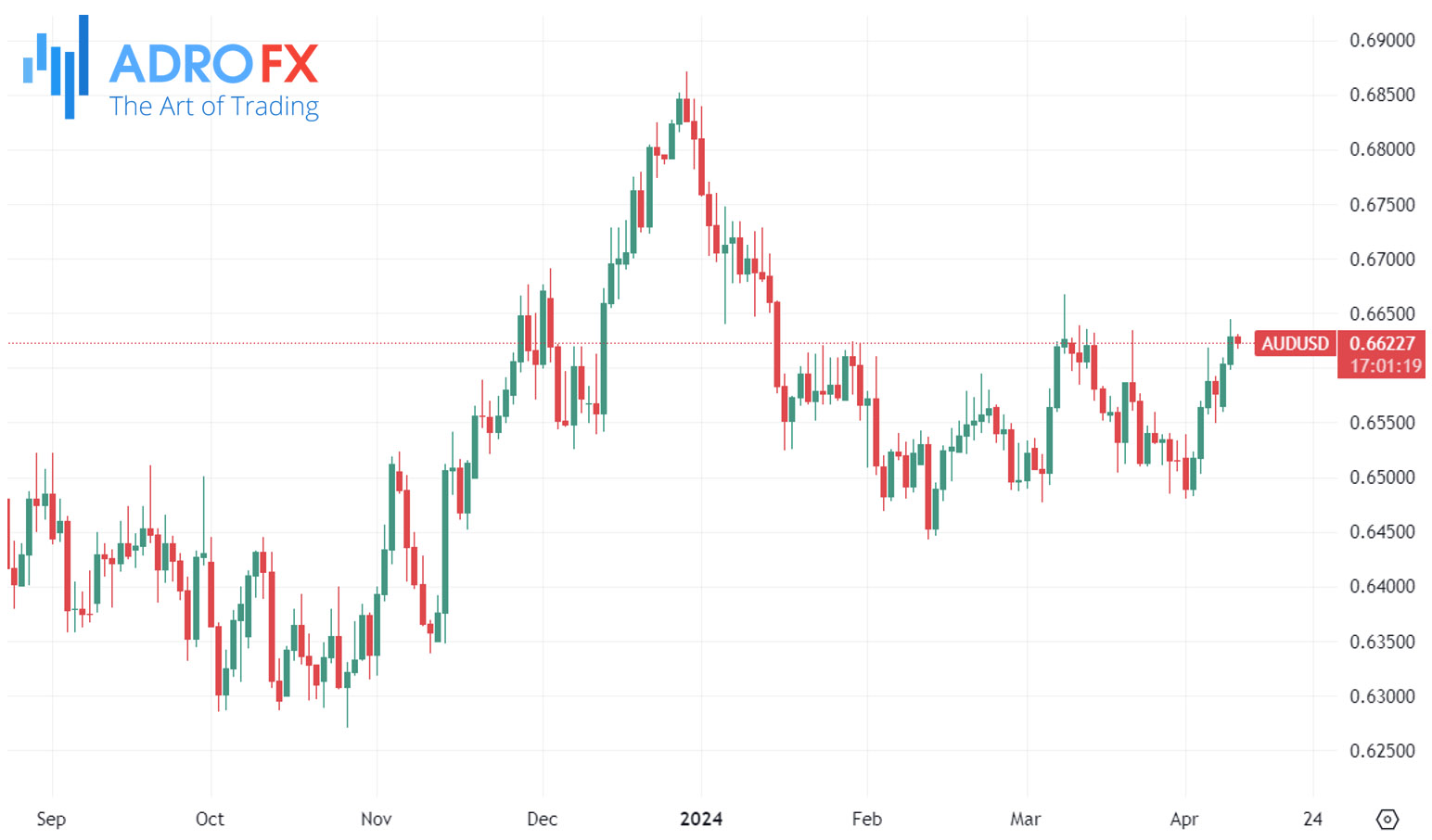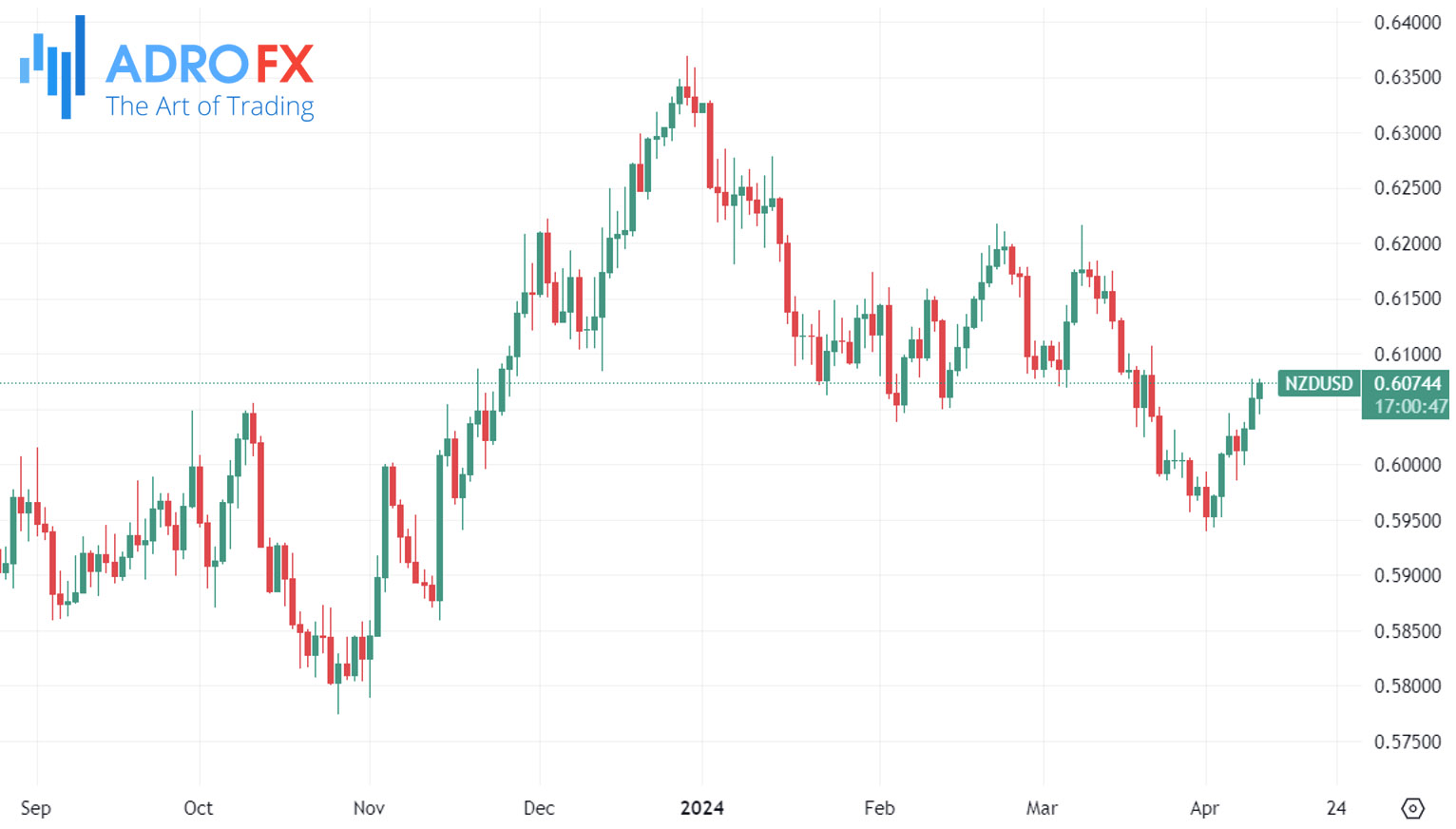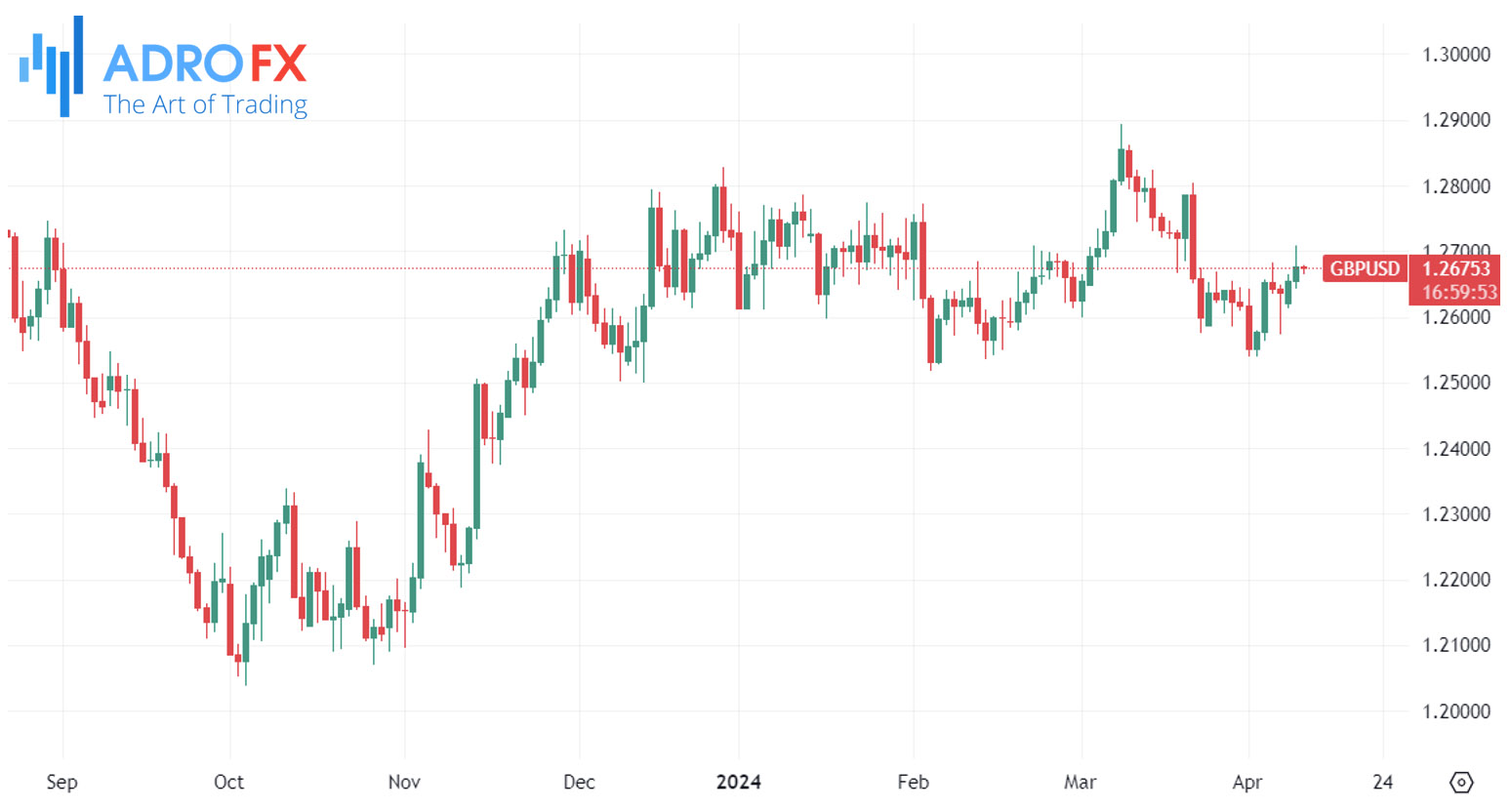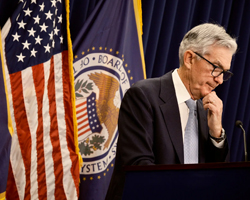US Stocks Grind Higher Amid Tech Sector Dips; Investors Brace for Inflation Data | Daily Market Analysis

Key events:
- USA - Core CPI (MoM) (Mar)
- Canada - BoC Interest Rate Decision
- USA - Crude Oil Inventories
- USA - 10-Year Note Auction
- USA - FOMC Meeting Minutes
On Tuesday, US stocks managed to secure a modest gain, although investors faced a tumultuous session characterized by fluctuations between losses and gains. This volatility was spurred by a dip in the tech sector led by Nvidia, casting a shadow ahead of pivotal inflation data scheduled for release the following day.
The Dow Jones Industrial Average dipped by 9 points, representing a marginal decrease of 0.02%. Conversely, the S&P 500 index edged up by 0.1%, while the NASDAQ Composite exhibited stronger performance, gaining 0.3%.

Investor attention remained fixated on the forthcoming CPI inflation data for March, anticipated to reveal a potential uptick in inflation. However, market analysts anticipate that the core measure of inflation, excluding food and energy, may have moderated to a pace of 0.3% in March from the previous month's 0.4%. Stubborn inflation has been a focal point for the Federal Reserve, potentially impacting decisions regarding interest rate adjustments. Several Fed officials have cautioned that elevated inflation levels could potentially postpone anticipated rate cuts later this year.
Additionally, market participants awaited the release of the minutes from the Fed's March meeting, which are likely to offer further insights into the central bank's future rate trajectory. Despite the Fed signaling 75 basis points of rate cuts for the year during the March meeting, traders have been scaling back expectations of imminent rate reductions. According to the CME Fedwatch tool, there is a 54% probability of a 25 basis point rate cut occurring in June.
In company news, Boeing Co (NYSE: BA) faced a setback as its stock dipped nearly 2%. The aircraft manufacturer came under scrutiny from the Federal Aviation Administration following reports of flaws in its 787 Dreamliner, highlighted by a whistleblower. The whistleblower alleged that the fuselage of the 787 Dreamliner was improperly fastened and susceptible to structural issues after repeated flights.

This development adds to Boeing's recent challenges, with the company still grappling with the fallout from an incident involving a Boeing 737-800 Southwest Airlines (NYSE: LUV) aircraft, where an engine cover detached during flight. As regulatory investigations mount, production halts have impacted Boeing's output, resulting in the lowest quarterly delivery of commercial airplanes in nearly three years, with only 83 aircraft delivered in the first quarter.
The Australian Dollar continues its upward momentum for the third consecutive session on Wednesday. The AUD/USD pair surged to a four-week high at 0.6644 in the previous session, partly due to the struggles faced by the US Dollar, which could be attributed to the decline in US Treasury yields.

Investor sentiment towards the Australian Dollar strengthens as doubts grow about the necessity for the Reserve Bank of Australia to implement interest rate cuts in 2024. This sentiment shift is fueled by expectations of the Federal Reserve maintaining its higher interest rate stance.
The Reserve Bank of Australia has signaled reluctance to consider further rate hikes, indicating a need for greater confidence in the inflation outlook before contemplating rate cuts.
Meanwhile, the NZD/USD pair has seen fluctuations following the Reserve Bank of New Zealand's interest rate decision. As anticipated, the central bank opted to keep its Official Cash Rate unchanged at 5.5% for the sixth consecutive meeting. The pair is holding steady around 0.6060 during Asian trading hours on Wednesday.

Policymakers emphasized the importance of maintaining restrictive rates to combat inflation. However, some economists view this decision as dovish, especially as New Zealand's economy faces recessionary pressures and a sharp decline in consumer confidence. Markets are now pricing in the likelihood of the RBNZ's first rate cut occurring in August.
Apart from that, GBP/USD the pair is exhibiting a slight negative bias near 1.2675 during the early Asian session on Wednesday. This sentiment is influenced by the latest forecast from the UK Office for Budget Responsibility, projecting a 0.8% growth for the UK economy this year, driven by a recovery in domestic demand. Friday's release of the nation’s monthly GDP figures will be closely watched. A stronger-than-expected GDP number could potentially slow the easing cycle and bolster the Pound Sterling against the USD.

Currently, markets are pricing in a 75 basis point reduction in the Bank of England rates this year, potentially lowering the benchmark rate from 5.25% to 4.5%.
Investors eagerly anticipate the release of US March CPI data, as it could provide insights for the Fed's future monetary policy decisions. Last month's data showed a 3.2% year-on-year increase in inflation. Persistent inflation signs and robust US economic growth could bolster the Greenback in the near term, attracting market attention.









